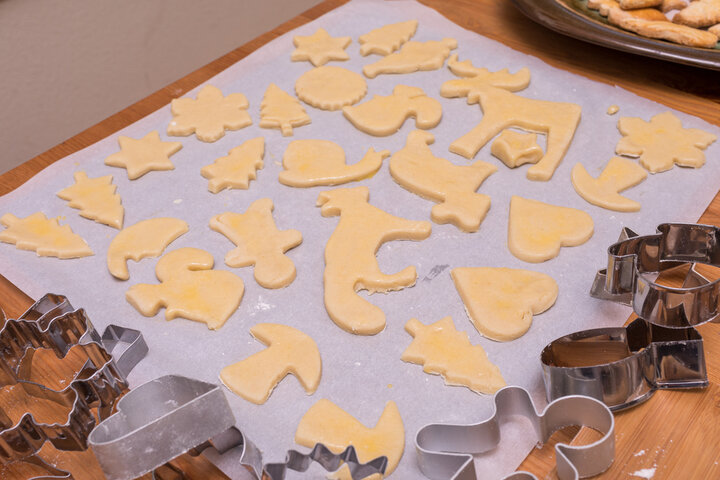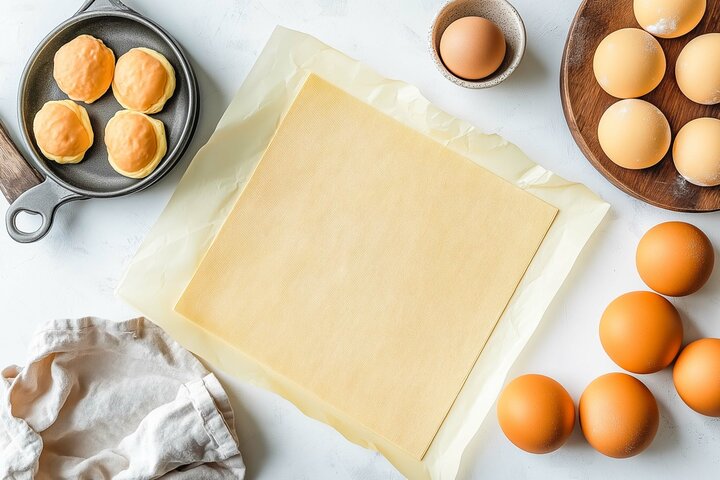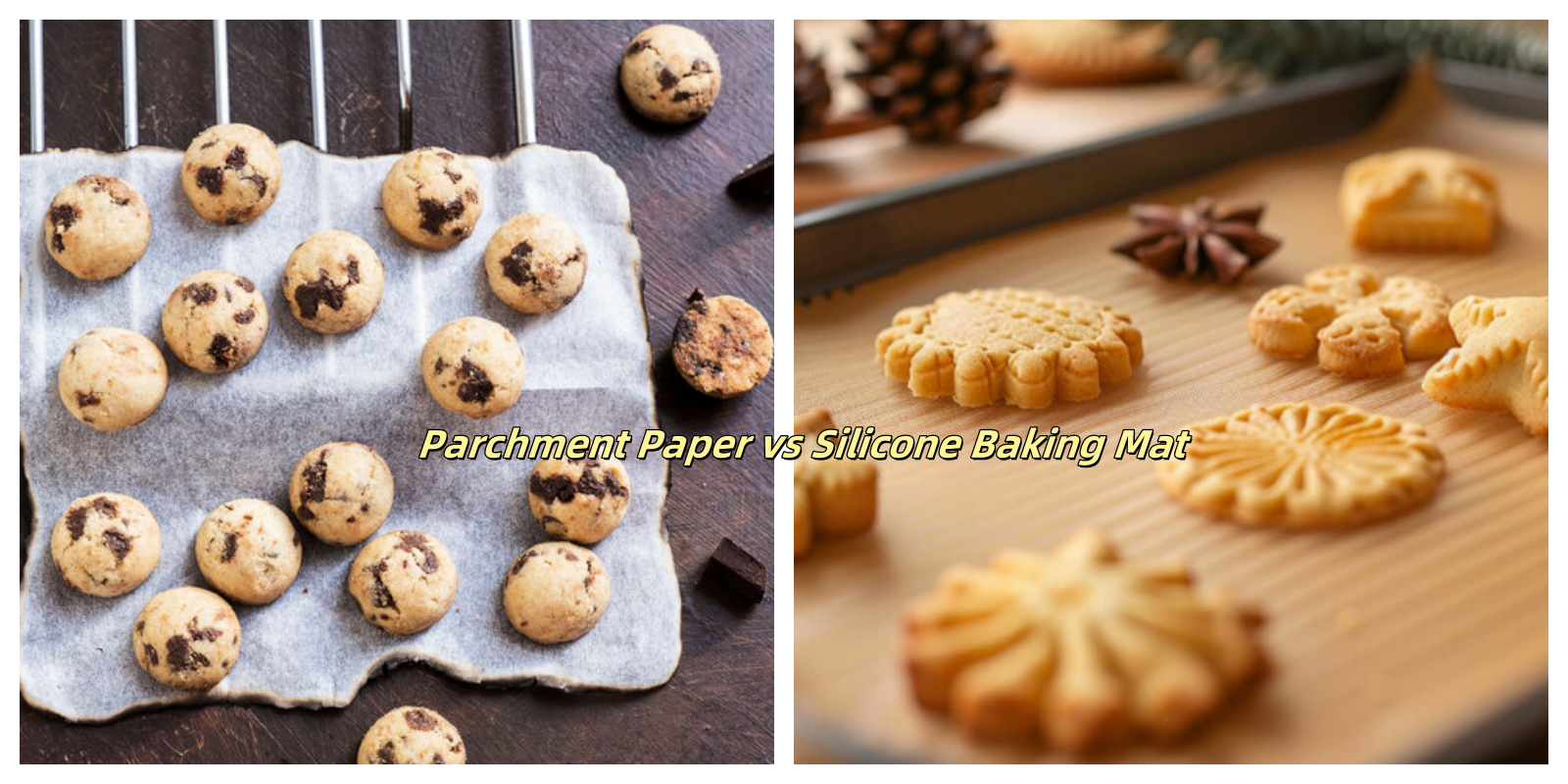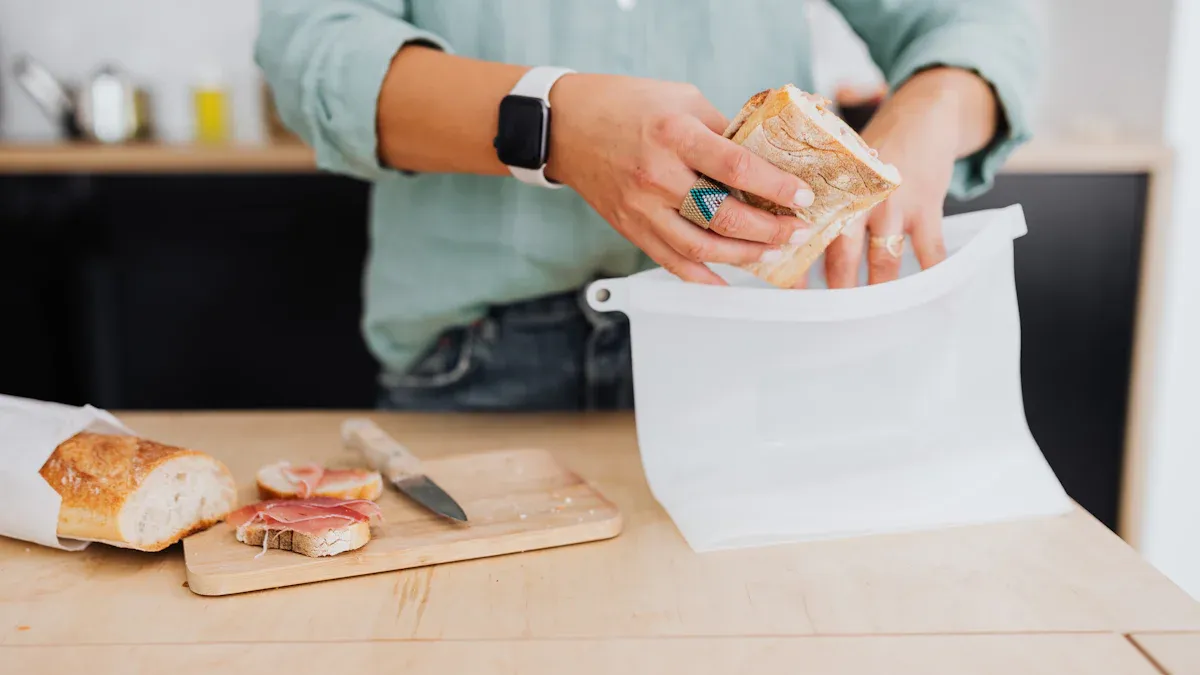
You want your kitchen to be safe for your family. Picking parchment paper without silicone helps keep you healthy. It also helps you feel calm. Many shoppers now want unbleached parchment paper without silicone. They think it is safer and better for a clean life. Studies show more people want non-toxic parchment paper without silicone. This is because more people bake at home and care about health. Many people ask, “Is there parchment paper without silicone?” Yes, there is. Choosing it means fewer chemicals touch your food.
Key Takeaways
Picking parchment paper without silicone keeps your food safer. It also helps protect your family from chemicals when you bake.
Parchment paper without silicone makes cookies puffier and crispier. Cookies will not spread as much or get soggy.
Unbleached parchment paper without silicone breaks down faster. It is better for the earth than silicone-coated paper.
Check for labels that say 'unbleached' and 'no silicone coating.' This helps you find parchment paper that is really non-toxic.
You can use unbleached parchment paper without silicone for most baking. You can also try reusable silicone mats to save money and make less trash.
Why Parchment Paper Without Silicone Matters
Health Concerns
You want your food to be safe. You also want your family to stay healthy. Using parchment paper without silicone helps you avoid some risks. Silicone coatings can let out chemicals called siloxanes when heated. This happens more at high temperatures. These chemicals might get into your food. Some experts say silicone is safer than PFAS or BPA. But silicone still has some risks. If you pick parchment paper without silicone coating, you stop this kind of chemical from moving into your food. Other materials can have their own risks too.
Tip: Always check if your parchment paper is really unbleached parchment paper without silicone. This helps you keep extra chemicals out of your baking.
Most health problems from silicone come from medical uses. People sometimes get joint pain, rashes, or feel tired after silicone implants. These problems are rare with baking. But low-quality silicone can still leak chemicals if it gets too hot. You protect your health by using parchment paper without silicone. This is important if you bake a lot or use high heat.
If you ask, "Is there parchment paper without silicone?" the answer is yes. Many brands now sell parchment paper without silicone coatings. This lets you choose what touches your food. It helps you make safer choices for your health.

Baking Results
The parchment paper you use can change your baking results. Parchment paper without silicone affects your cookies and baked goods. Cookies spread less and stay puffier and lighter on this paper. Silicone mats and coated papers make cookies spread more. They can trap moisture and make bottoms soggy.
Parchment paper without silicone lets heat move around your food better. Your cookies and pastries get crispier and brown more evenly.
Silicone mats have a slick surface that does not breathe. They can make cookies spread out and get softer or soggy underneath.
Parchment paper makes cleanup easy because you can throw it away after use.
Professional bakers like silicone-coated parchment for its non-stick and reusable features. But home bakers who want fewer chemicals pick parchment paper without silicone. It may not last as long, but it helps you feel safe about your health and your baked goods.
Note: If you want cookies with the best texture and less spreading, use parchment paper without silicone coating. You will see a difference in taste and how your cookies look.
Silicone Risks
Health Effects
You might wonder if silicone in parchment paper is safe. Food-grade silicone is used in many kitchen tools. The FDA and EFSA both say food-grade silicone is safe for food. These groups have strict rules to keep your food safe from bad chemicals. Here is a table that shows what these groups need:
| Region |
Regulatory Agency |
Key Safety Requirements for Food-Grade Silicone |
| United States |
FDA |
Compliance with 21CFR177.2600 ensuring no toxic substances are released at use temperatures |
| European Union |
EFSA |
Compliance with (EC) No. 1935/2004 limiting harmful substance migration into food |
| Germany |
LFGB |
Certification that material contains no toxic substances harmful to humans |
You may still worry about using silicone-coated parchment paper. Some people think scratching the silicone can make tiny pieces get into food. Heating silicone at high heat can also let out chemicals like polydimethylsiloxane (PDMS). Scientists say these chemicals are usually safe, but they keep studying what happens if you breathe them in.
Long-term studies show silicone is not very toxic. Your body does not take in much silicone. Most people do not get sick from eating food that touched silicone. But old or damaged silicone can break down and let out more chemicals. Heated silicone can release volatile methylsiloxanes. These might cause health problems if you use them a lot or at very high heat. Experts say these chemicals are not as well-known as pfas, but you should still be careful.
Tip: Always use good food-grade parchment paper and follow the temperature rules on the box. If you want to avoid these risks, pick unbleached parchment paper without silicone or parchment paper without silicone coating.
Some people can be allergic or sensitive to silicone. If you get a rash or feel bad, stop using silicone-coated products. You might ask, "Is there parchment paper without silicone?" Yes, you can find safer choices for your kitchen.
Environmental Impact
You care about the earth and your health. Silicone-coated parchment paper is not good for the environment. The silicone layer does not break down fast. You cannot compost or recycle most silicone-coated parchment paper. When you throw it away, it stays in landfills for a long time.
Uncoated parchment paper, like unbleached parchment paper without silicone, breaks down much faster. It is usually compostable and better for the planet. Here is a table that shows how fast each type breaks down:
| Type of Parchment Paper |
Total Mass Loss (%) |
Biodegradability Implication |
| Silicone-coated parchment |
0.4 |
Very low degradation; not compostable |
| Uncoated parchment paper |
9.4 |
Higher degradation; suitable for composting |
Silicone-coated parchment paper keeps out water and heat, but it does not rot. Most recycling centers will not take it because the silicone cannot be removed from the paper. Food stains make recycling even harder. Uncoated parchment paper is easier to compost and sometimes recycle, but you need to keep it clean.
Note: If you want to help the environment, use unbleached parchment paper without silicone. Certified compostable parchment papers are also good for green kitchens.
Making parchment paper can also hurt the environment. Bleaching and adding silicone use chemicals that can pollute water and air. Picking parchment paper without silicone coating helps keep the earth cleaner and makes less waste.

Identifying Non-Toxic Parchment Paper
Uncoated vs. Coated
You want to keep your kitchen safe. It helps to know the difference between uncoated and coated parchment paper. Uncoated parchment paper is not treated with extra chemicals. It is usually unbleached and has a brown color. This kind does not use chlorine or other harsh chemicals. It avoids the dangers from chemical treatments. Coated parchment paper has a layer on it. The layer is often silicone or sometimes PFAS. These coatings make the paper non-stick and keep out water. PFAS coatings have caused health worries and are being removed in the U.S. Silicone coatings are common and are called food-safe, but some people still want to avoid them.
You can tell the difference by looking at the paper. Uncoated parchment paper looks brown and feels dull. Coated parchment paper is a bit shiny and can be white or brown. The table below shows how they compare:
| Paper Type |
Surface Appearance |
Notes |
| Silicone-coated parchment paper |
Uniform semi-glossy on both sides |
May be white or brown; sometimes has grids |
| Uncoated parchment paper |
Matte, natural brown |
Untreated, chlorine-free |
If you want unbleached parchment paper without silicone, pick the brown, dull sheets.
Labeling Tips
It can be hard to find truly non-toxic parchment paper. Many brands use words like "natural" or "eco-friendly." These words do not always mean the paper is safe. You should look for labels that say "unbleached," "chlorine-free," and "no silicone coating." Some products say "PFAS-free" or "compostable." These mean the paper does not have bad chemicals. Certifications like FSC or B Corp show the brand cares about safety and the earth.
Here are some tips to help you:
Look for labels that say "unbleached parchment paper without silicone" or "parchment paper without silicone coating."
Check for third-party certifications like FSC or B Corp.
Non-toxic parchment paper can cost more and may be harder to find.
Be careful when shopping online. Some brands make claims that are hard to check.
Tip: If you ask, "Is there parchment paper without silicone?"—yes, but you need to read labels and look for trusted certifications.
Choosing non-toxic parchment paper keeps you and the planet safe. You can bake with confidence when you know what to look for.
Alternatives to Silicone-Coated Paper

Image Source: pexels
Non-Toxic Parchment Paper
You have many safe choices if you want to skip silicone-coated parchment paper. The safest kind is usually unbleached parchment paper without silicone. This paper uses natural wood pulp and does not use strong chemicals. You might see labels like "parchment paper without silicone coating" or "unbleached parchment paper without silicone." These sheets are often brown and have a dull look. They work well for baking cookies, roasting veggies, and lining cake pans.
Unbleached parchment paper without silicone breaks down fast and is compostable.
You can bake with it up to about 425°F. It stops food from sticking and makes cleaning up easy.
Some brands sell rolls or sheets with jagged edges to make things easier.
Tip: If you wonder, "Is there parchment paper without silicone?"—yes, you can find it in stores or online. Always check the label for "no silicone coating."
Here is a quick chart to show how non-toxic parchment paper compares to other choices:
| Feature |
Unbleached Parchment Paper Without Silicone |
Silicone-Coated Parchment Paper |
| Non-stick |
Good |
Excellent |
| Compostable |
Yes |
No |
| Max Baking Temp |
425°F |
450°F |
| Chemical-Free |
Yes |
Sometimes |
| Single-Use |
Yes |
Yes |
Reusable Baking Mats
Silicone baking mats are another good choice for your kitchen. You can use silicone baking mats many times, which saves money and cuts down on trash. These mats work well for cookies, pastries, and sticky foods. They can handle high heat, often up to 480°F or more. You do not need to grease pans when you use silicone baking mats.
Silicone baking mats last for years if you clean and store them right.
They do not break down, but their long life means less garbage.
Do not cut on silicone baking mats because this can ruin them.
Here is a chart that shows the cost difference between unbleached parchment paper and silicone baking mats:

You can see silicone baking mats cost more at first, but you save money over time. They help the earth by making less waste. You must wash silicone baking mats after each use. They can hold smells if you do not clean them well.
Note: Silicone baking mats are best for people who bake a lot and want a reusable, non-stick surface. If you bake only sometimes, unbleached parchment paper without silicone may be easier and better for you.
Other Alternatives:
Aluminum foil (needs greasing, not non-stick)
Butter and flour method (works well for cakes)
Cooking sprays (quick but may have extra stuff)
Pick what works best for you. If you want the safest parchment paper, choose unbleached parchment paper without silicone. If you want to save money and make less trash, try silicone baking mats.
Picking unbleached parchment paper without silicone helps keep you healthy. It also makes your baking better. You do not get extra chemicals in your food. This choice is good for the earth. Always read the label for “parchment paper without silicone coating.” Look for brands that show lab tests with low fluorine. Ask yourself, “Is there parchment paper without silicone?” Choose ones made from bamboo or renewable pulp. The Environmental Working Group gives guides for safe kitchen choices. You can bake safely and protect your family by making smart choices.
FAQ
What is unbleached parchment paper without silicone?
Unbleached parchment paper without silicone comes from natural wood pulp. It does not have a silicone layer or strong chemicals. You can use it for baking if you want something safer and more natural.
Is there parchment paper without silicone?
Yes, you can buy parchment paper without silicone. Look for packages that say "unbleached parchment paper without silicone" or "parchment paper without silicone coating." These kinds are usually brown and not shiny.
How do I know if parchment paper has a silicone coating?
Read the box for words like "silicone-coated" or "non-stick." If it says "parchment paper without silicone coating," it is a safer pick. Uncoated paper feels rough and looks brown, not glossy.
Can I compost unbleached parchment paper without silicone?
You can put unbleached parchment paper without silicone in your compost. It breaks down faster than coated paper. Make sure the paper is clean and does not have food grease for the best results.




















